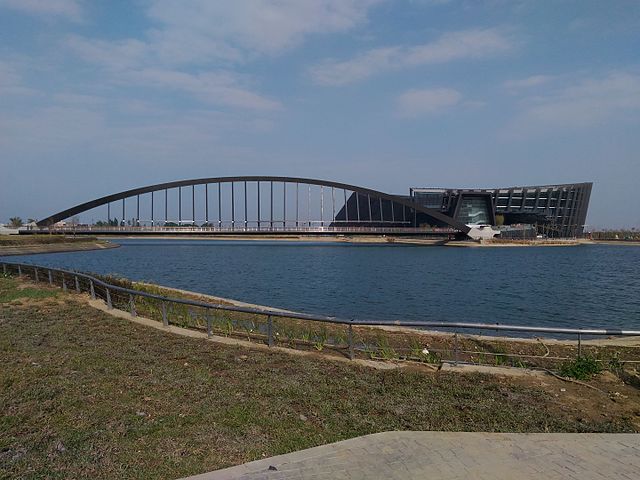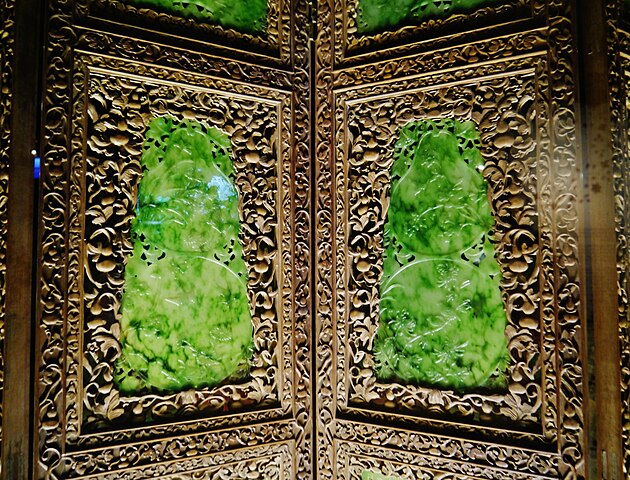
The Thammasat University Library has newly acquired a book about one of the most important museum collections in the world. Splendors of the Southern Branch of the National Palace Museum was edited by Feng Ming-Zhu. It was published in Taipei by the National Palace Museum and is shelved in the General Stacks of the Pridi Banomyong Library, Tha Prachan campus.
The National Palace Museum, located in Taipei and Taibao, Chiayi County, Taiwan, has a permanent collection of nearly 700,000 pieces of ancient Chinese imperial artifacts and artworks, making it one of the largest of its type in the world. The TU Library owns a number of other books about, or published by, the National Museum.
They include Great national treasures of China: masterworks in the National Palace Museum; Masterpieces of Chinese Tibetan Buddhist altar fittings in the National Palace Museum; Meet the new National Palace Museum; Splendors of Imperial China : treasures from the National Palace Museum, Taipei by Maxwell K. Hearn; Treasures of the National Palace Museum guidebook edited by Chin Jie-jin and Hsu Chun-hsien; and Islamic jades in the National Palace Museum collection, edited by Teng Shu-pʻing.
The Southern Branch of the National Palace Museum is located in Taibao, Chiayi County, Taiwan. Its landscaping includes a lake and Asian garden. In 2010, the architectural firm of KRIS YAO | ARTECH was assigned the project. Kris Yao is a Taiwanese architect, and the founder and head architect at KRIS YAO | ARTECH in Taipei and Shanghai. He was born in Taipei, and earned a bachelor of architecture degree at Tunghai University, a private university in Taiwan.
The name Tunghai means the east coast of the Taiwan Strait in the Chinese language. As the website of Tunghai University College of Fine Arts and Creative Design explains,
- This college includes the following departments, Fine Arts, Music, Architecture, Industrial Design, and Landscape Architecture. They are transferred from Arts College, Engineering College, and Agricultural College. These five departments have their traditional background in their fields and are recognized in Taiwan. The themes of this new college are ‘Adventure-Based Creativity’, ‘Fundamental Creativity’, and ‘Artistry-based Creativity’. By following these themes, the new thoughts by talented professionals will bring a new look to the world.
- Inspired by the concept in the Blue Ocean Strategy, a popular book on business, the emphasis of the college is to explore the wider, deeper potential of market space, like the untouched “blue” ocean, rather than competing in existing industries. Therefore it is essential to provide our students with advanced technical training and relevant research programs so they can meet the demands for research and creative personnel in this filed. A college level lab, the ‘ABC media Laboratory’ has been set up for this purpose.
- The need for interdisciplinary talent is increasing. To incorporate music, fine arts, landscape, industrial design, architecture, social aspects, and business administration will be a challenge in the creative industry. It is our belief that ‘Interdisciplinary Art Form’ will be the future.
Kris Yao also received a master’s degree in architecture from the University of California at Berkeley, California, USA. The University of California at Berkeley has an outstanding architectural program.

Southern Branch of the National Palace Museum
The director of the National Palace Museum is Dr. Wu Mi-cha, a Taiwanese historian, who was appointed to the position earlier this year. The TU Library owns a book coauthored by Dr. Wu, The Authentic Story of Taiwan: An Illustrated History, Based on Ancient Maps, Manuscripts and Prints.
It is shelved in the General Stacks of the Pridi Banomyong Library.
Dr. Wu studied history at National Taiwan University (NTU)
As its departmental website notes,
The History Department at NTU… is known for its transmission of excellent scholarship in Chinese History, Western History and Japanese History. The Department is also known for its distinctive studies in Taiwan History conducted in light of Southeast Asian history and anthropology (especially ethnology but also physical anthropology)… We have been witnessing major changes in the practice of historical inquiry in the present century. In response to the pressures of globalization, increased professionalism and competition, we are proactively developing a new instruction and research system and building research teams.
Dr. Wu later joined the faculty of NTU after completing his doctorate at the University of Tokyo, specializing in the history of Taiwan.
The Southern Branch of the National Palace Museum was built to increase cultural equity between Northern and Southern Taiwan. The museum and park were constructed by Lee Ming Construction and Progressive Environmental Inc. landscape designers.
A Taiwanese government website explains:
Billed as a “museum of Asian art and culture,” the Southern Branch of the National Palace Museum is a glittering 70-hectare facility dedicated to collecting, researching, preserving, and exhibiting artifacts and relics from across Asia. While the National Palace Museum is home to the world’s largest collection of priceless Chinese artifacts, in which over 600,000 items have to be displayed in rotation, the Southern Branch looks beyond 5,000 years of Chinese history, focusing instead on all Asian arts and culture. The Southern Branch features tall, modern architectural elements designed by noted architect Kris Yao… which stands in stark contrast to the National Palace Museum, a palatial monument in Taipei built in the style of imperial Chinese citadels. Embraced by a lake overarched with cursive bridges, the Southern Branch also pays homage to ancient Chinese, Indian, and Persian civilizations by decorating its exterior with images of dragons, elephants, and horses. Sporting a reception hall, a library, a children’s creative center, and an auditorium, the Southern Branch offers larger display space and more modern facilities than its Taipei counterpart. The museum infrastructure and surrounding landscape are certified “green” and resistant to floods and drought.
In a region with an aging population, where many younger people leave to seek jobs in cities, the traditional agricultural economy is threatened. By opening an important new museum branch, the Taiwanese government is making an effort to create a provincial tourism economy and revive the local region. When the Southern Branch of the National Palace Museum opened, one architectural critic noted:
Unlike its namesake in Taipei, where Chinese culture takes center stage, the museum, based in the southwestern county of Chiayi, celebrates the interconnectedness and cross-pollination of Asian cultures over the centuries. Current exhibits employ motifs including goods such as textiles, ceramics and tea, as well as references to Buddhism and Islam, to highlight the shared heritage of the world’s most populous continent.

(All images courtesy of Wikimedia Commons)
